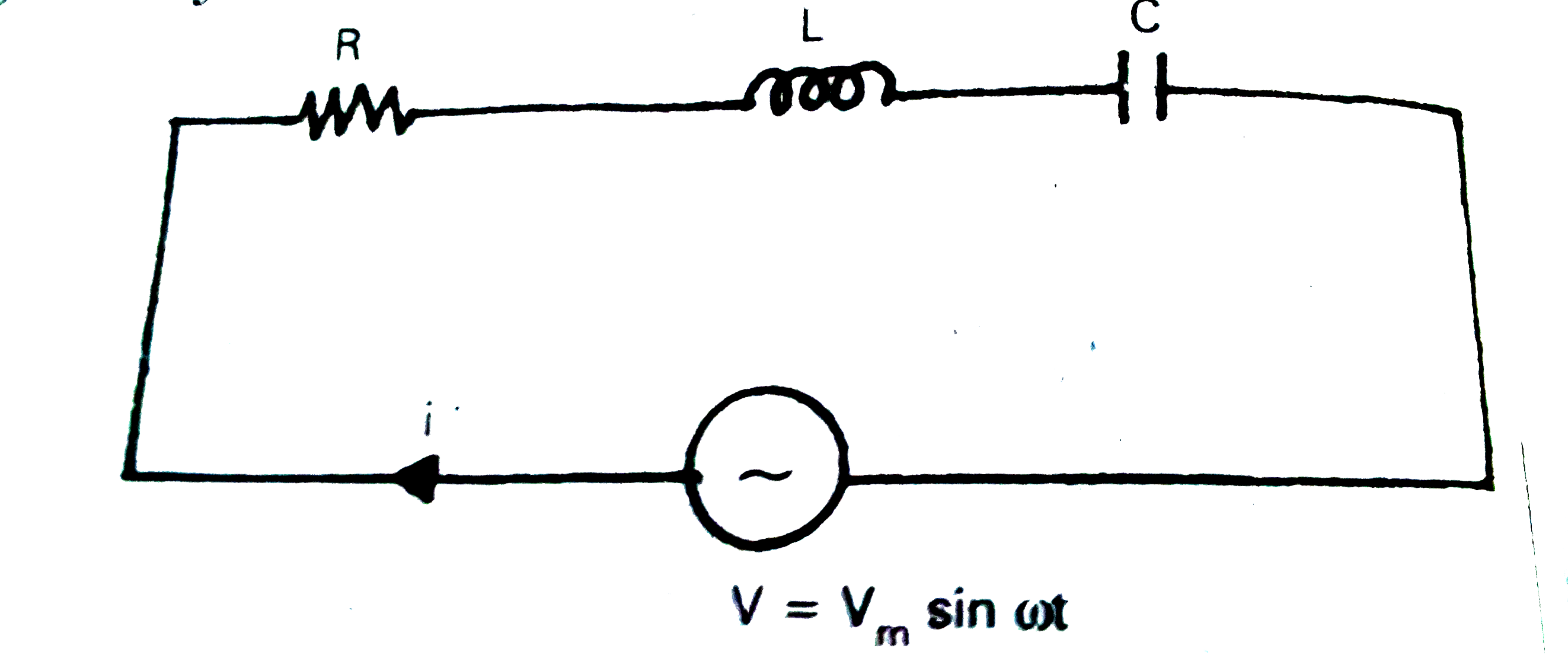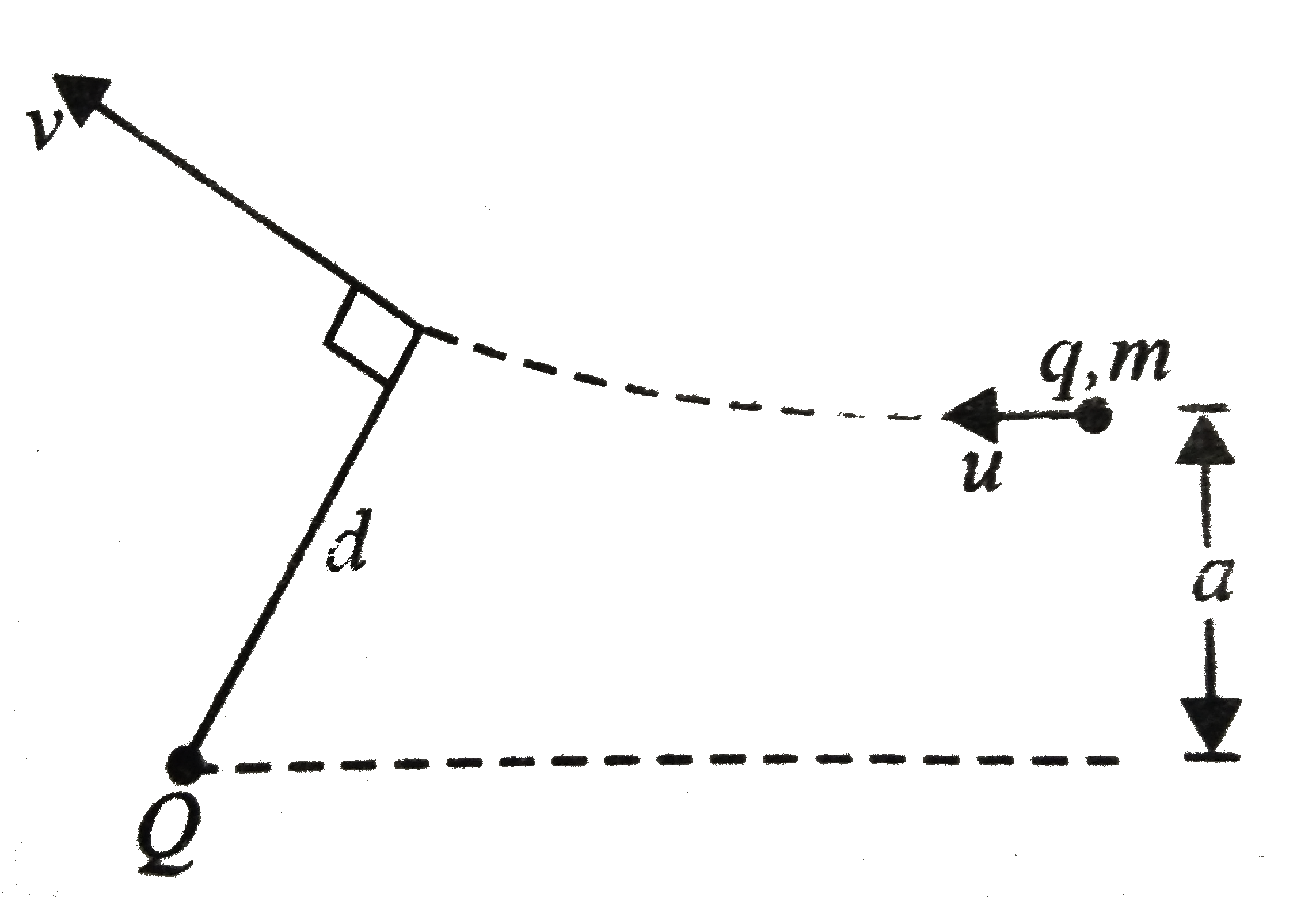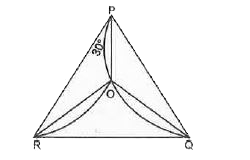Explore topic-wise InterviewSolutions in .
This section includes InterviewSolutions, each offering curated multiple-choice questions to sharpen your knowledge and support exam preparation. Choose a topic below to get started.
| 45151. |
If complex number z(zne2) satisfies the equation z^(2)=4z+|z|^(2)+(16)/(|z|^(3)), then what is the value of |z|^(4) ? |
|
Answer» 1 |
|
| 45152. |
In question number 70, what is frequency of photon ? |
|
Answer» `3.1xx10^(15)Hz` Here, `c=3xx10^(8)MS^(-1)`,`lambda=9.7xx10^(-8)m`. `thereforeupsilon=(3xx10^(8))/(9.7xx10^(-8))=3.1xx10^(15)Hz`. |
|
| 45153. |
जीवाणु की कोशिका -भित्ति (cell wall) बनी होते है : |
|
Answer» कार्बोहाइड्रेट से |
|
| 45154. |
The electric field associated with a light wave is given by E=E_0sin [(1.57xx10^7)(x-ct)] (where x and t are in metre and second respectively ). This light is used in an experiment having work function phi=1.9eV. what is the ejected photoelectron ? [ Take pi=3.14, hc = 12400 eVÅ] |
|
Answer» |
|
| 45155. |
Through two parallel wires A and B, 10 and 2 ampere of currents are passed respectively in oppo-site direction. If the wire A is infinitely long and the length of the wire B is 2m, the force on the conductor B, which is situated at 10cm distance from A will be |
| Answer» Answer :A | |
| 45156. |
Obtain on expression for impedance and current in series LCR circuit. Deduce an expression for the resonating frequency of an LCR series reasonating circuit. |
|
Answer» Solution :Circuit consists of resistor of RESISTANCE R, inductor of inductance L and capacitor of Let i be the current and q be the charge at any instant t. Back e.m.f across inductor is `-L (di)/(dt)` and across capacitor is `(-q)/(C )` TOTAL e.m.f `= V_(m)sin omega t - L (di)/(dt)-(q)/(C )`  According to Ohms law, this must be equal to iR `V_(m)sin omega t-L(di)/(dt)-(q)/(C )=iR` `L(di)/(dt)+iR+(q)/(C )=V_(m)sin omega t`.....(1) The current i any instant in the circuit is `i=i_(m)sin(omega t - phi)` if `omega L ge (1)/(omega C)` which is POSSIBLE at HIGH frequencies. `i=i_(m)sin(omega t+phi)` if `omega L lt(1)/(omega C)` which is possible at low frequencies. The maximum current `(i_(m))` is given by `i_(m)=(V_(m))/(sqrt(R^(2)+((1)/(omega c)-omega L)^(2)))` ....(2) Its impedance `(Z)=(V_(m))/(i_(m))=sqrt(R^(2)+((1)/(omega C)-omega L)^(2))` ....(3) Let `phi` be the phase difference between current and e.m.f `phi = tan^(-1)(((1)/(omega C)-omega L)/(R ))` ....(4) RESONANT freuency `(f_(0))` : At this frequency, the impedance of LCR circuit is minimum and is equal to R. At this frequency current is maximum. This frequency is called resonant frequency `(f_(0))`. At resonance `omega L = (1)/(omega C)` `omega^(2)=(1)/(LC)` (or) `omega = (1)/(sqrt(LC))` `2pi f_(0)=(1)/(sqrt(LC))` `f_(0)=(1)/(2pi sqrt(LC))`  In frequency response curve, at resonant frequency `(f_(0))`, current is maximum. This series resonant circuit is called acceptor circuit. |
|
| 45157. |
A hemisphere (made of material of refractive index sqrt(3) )of radius ris placed on a horizontal surface with its base touching the surface. A vertical beam of cross sectional radius (sqrt(3))/(2) r is incident symmetrically on its curved surface. Find the radius of the spot of light formed on the horizontal surface |
| Answer» SOLUTION :`(R )/( SQRT(3))` | |
| 45158. |
In a Young's experiment, the distance between two slits is 0.2 mm. If the wavelength of light used in this experiment is 5000 Å, then the distance of 3rd bright fringes from central maxima will be ...... |
|
Answer» `0.75` In `d sin theta= n lambda` `n=3, d=0.2 cm lambda=5xx10^(-5) cm` `:. sin theta=(n lambda)/(d)=(3xx5xx10^(-5))/(0.02)` `sin theta=(0.015)/(2)=0.0075` `:. sin theta =0.0075` RAD |
|
| 45159. |
What results exchange of force between neutron and proton due to charged meson. |
| Answer» SOLUTION :FORCE `PTO pi+n,NTO p+overset-pi` | |
| 45160. |
Hydraulic lift works on the basis of |
|
Answer» Stoke.s Law |
|
| 45161. |
Derive an expression for the impedance of a series LCR circuit connected to an a.c. supplied to the of variable frequency. Plot a graph showing variation of current with the frequency of the applied voltage. Explain briefly how the phenomenon of resonance in the circuit can be used in the turning mechanism of a radio or TV set. |
Answer» Solution : Let `V_(L), V_(R ), V_(C )` and V represent the VOLTAGE across the inductor resistor capacitor and the source respectively. `V_(R )`is parallel to I. `V_(C )` is `pi//2`behind I and `V_(L)` is `pi//2` ahead of I. Now `V_(OR) = V_(OC) = i_(0)X_(C)` and `V_(OL) = I_(0)X_(L)` CLEARLY `V_(0)^(2) = V_(OR)^(2) + (V_(OL) - V_(OC))^(2)` `= i_(0)^(2)[R^(2) + (X_(L) - X_(C))^(2)]` Thus `i_(0) = (V_(0))/(sqrt(R^(2) + (X_(L) - X_(C))^(2))` Impedance `= (V_(0))/(i_(0)) = sqrt(R^(2) + (X_(L) - X_(C))^(2))` `= sqrt(R^(2) + (omega L - (1)/(omega C))^(2))`  The capacitance of a capacitor in the turning circuit is varied such that the reason and frequency of the circuit becomes nearly EQUAL to the frequency of the radio signal to be received. When this happens the amplitude of the CURRENT becomes MAXIMUM in the receiving circuit. |
|
| 45162. |
An aeroplane flies along a straight line from A to B with a speed y, and back again with the same speed v_(0). A steady wind v_(0) is blowing. If AB=1 then total time for the trips is (2v_(0)l)/(v_(0)^(2)-v^(2)) if wind blows along the line AB total tiem for the trip is (2l)/(sqrt(v_(0)^(2)-v^(2))), if wind blows perpendicular to the line AB total time for the trip decrease because of the presence of wind total time for the trip increase because of the presence of wind |
|
Answer» a, B, d are CORRECT |
|
| 45163. |
An electric bulb rated for 500 watt at 100 volt is used in a circuit having a 200 volt supply. The resistance R that must be put in series with the bulb, so that the bulb delivers 500 watt is ……….. Ohm. |
|
Answer» <P> Solution :Resistance of the bulb `R_(0)=(V_(0)^(2))/(P_(0))=(100xx100)/(500)=20Omega` To deliver 500 W long the given bulb 100 V P.d. must drop at the bulb. As the given source has emf 200 V, remaining 100 V P.D. must drop at the resistance R. As the potential DIFFERENCES are EQUAL across `R and R_(0)` and they are in series, `R=R_(0)` `therefore R=20Omega` |
|
| 45164. |
A spherical shell of mass 20 kg is stationary at the top of a hill of height 100 m. It rolls down a smooth surface to the ground, then climbs up another hill of height 30 m and finally rolls down to a horizontal base at a height of 20 m above, the ground. The velocity attained by the ball is : |
|
Answer» `40 m//s` `MG XX 80 = (1)/(2)mupsilon^(2)` ` IMPLIES upsilon^(2) = 2 xx 10 xx 80 = 1600` `impliesu= 40 m//s` HENCE choice is (a). |
|
| 45165. |
In the above problem, find the ratio of frequencies of wave |
|
Answer» `(M)/(M + m)` |
|
| 45166. |
A radioactive nucleus undergoes a series of decays according to the sequence A overset(beta)rarrA_(1)overset(alpha)rarrA_(2) overset(alpha)rarrA_(3).If the mass number and atomic number of A3 are 172 and 69 respectively, what is the mass number and atomic number of A? |
| Answer» Answer :A | |
| 45167. |
Two equal positive charges are kept at points A and B. The electric potencial at the points between A and B (excluding these points) is studied while moving from A to B The potential |
|
Answer» contiuously increases |
|
| 45168. |
A tuning fork produces a wave of wavelength 110 cm in air at 0°C. The wavelength at 25°C would be |
| Answer» ANSWER :B | |
| 45169. |
Current sensivity of galvanometer in inversely proportional to…… |
|
Answer» number of TURNS `phi/I=(NAB)/k""`[k = torsional constant] |
|
| 45170. |
State the potentiometer principle. |
| Answer» Solution :Potential difference between two POINTS of a CURRENT carrying conductos is directly PROPORTIONAL to the LENGTH of the wire between two points. | |
| 45171. |
The sound waves after being converted into electrical waves are not transmitted as such because |
|
Answer» they travel with the speed of SOUND |
|
| 45172. |
Consider two conducting spheres of radii R_(1) and R_(2) with R_(1) gt R_(2). If the two are at same potential, the larger sphere has more charge than the smaller sphere, then charge density of the smaller sphere is more than that of the larger one. |
|
Answer» |
|
| 45173. |
A nucleus containing Z protons and N neutrons has a mass M . If the mass of a proton is m_p and that of a neutron is m_n , then the mass defect of the nucleus is |
|
Answer» `M-Zm_p-Nm_n` |
|
| 45174. |
A force vector applied on a mass is represented as vec(F)=6 hat(i) - 8hat(j) + 10hat(k) N and accelerates the mass at 5 ms^(-2) . The mass of the body is : |
|
Answer» `2sqrt(2)`kg `2sqrt(2)` kg |
|
| 45175. |
Two beams of light having intensities I and 4I interfere to produce a fringe pattern on the screen.Phase differenced between the beamsis (pi)/(2) atpoint A and pi at point B.Then difference between the resultant intensities at A and B is : |
|
Answer» 3I `theta_(1) = (PI)/(2), theta_(2) = pi` Now, `I_(A) = I_(1) + I_(2) +2sqrt(I_(1)I_(2)) COS (pi)/(2)` ` = I + 4I + 0 = 5I` `I_(B) = I_(1) + I_(2) +2sqrt(I_(1)I_(2)) cos pi = 1` `therefore I_(A) - I_(B) = 5I - I = 4I` |
|
| 45176. |
The focal length of a thin biconvex lens is 20cm. When an object is moved from a distance 25cm in front of it 50cm, the magnitude of magnification of its image changes from m_25to m_50 . The ratio (m_25)/(m_50) is |
|
Answer» |
|
| 45177. |
What is an electrostatic shielding? Mention its one application. |
| Answer» Solution :The field inside the cavity of conductor is alaways zero and it remain shielded from outside electric influence . This is known as ELECTROSTATIC shielding . SENSITIVE COMPONENTS of ELECTRONIC DEVICES are protected. | |
| 45178. |
Which of the following is not due to total internal reflection ? |
|
Answer» OPTICAL fibre |
|
| 45179. |
Velocity of a particle moving in a straight line is v=sqrt(9+4s). Here v is in m/s and 's' displacement in meter.Mass of the particle is 2kg. The time in seconds at which average power is ((3)/(4))^(th) of the instantaneous power is : |
|
Answer» 0.92 |
|
| 45180. |
What are anastigmatic lenses ? |
|
Answer» Solution :The lenses which have been duly corrected for most of the optical defects of images FORMED by them are called anastigmatic lenses. These lenses are used in good QUALITY optical instruments LIKE camera, MICROSCOPE, TELESCOPE, binoculars, etc. |
|
| 45181. |
(a) In a typical nuclear reaction, e.g., " "_(1)^(2)H + " "_(1)^(2)H to " "_(2)^(3)He +n +3.27 MeV, although number of nucleons is conserved, yet energy is released. How ? Explain. (b) Show that nuclear density in a given nucleus is independent of mass number A. |
|
Answer» Solution :(a) Ina typical nuclear reaction, e.g., `" "_(1)^(2)H + " "_(1)^(2)H to " "_(2)^(3)He +n +3.27 MeV`, although number of nucleons is conserved, yet ENERGY is released. It is on account of fact that in a nuclear reaction there is TINKERING with the NUCLEUS so as to rearrange its nucleons into more stable configurations. In other words the binding energy per NUCLEON is more in a nucleus with stable configuration. As a result energy is released in a nuclear reaction. In fact, the energy released in a nuclear reaction is the difference between the total binding energy of products and total binding energy of reactants. |
|
| 45182. |
A charge particle q is projected in an electric field produced by a fixed point charge Q as shown in figure. Mark the correct statements. |
|
Answer» The path taken by q is a straight line. The path traced by `q` is SHOWN in Fig. `SAI.58`, The path is curvilinear and acceleration is due to the force exerted by `Q` on `q`. The separation between them is minimum if relative velocity of the particle along the line joining them is zero. Let `d` be the minimum separation between them. As torque about `Q` is zero, angular momentum remains conserved. `mua=mvd` or `V=(ua)/(d)` From energy conservation law, `(mu^(2))/(2)=(mv^(2))/(2)+(1)/(4piepsilon_(0))(qQ)/(d)` 
|
|
| 45183. |
A compound microscope uses an objective lens of focal length 4 cm and eyepiece lens of focal length 10 cm. An object is placed at 6 cm from the objective lens. Calculate the magnifying power of the compound microscope. Also calculate the length of the microscope |
|
Answer» SOLUTION : It is given that focal length of objective lens `f_(0)= + 4 cm`focal length of eyepiece lens `f_e = +10 cm` and `u_(0) = - 6 cm` Let the final image is formed at the least distance of distinct vision (D = 25 cm). For object lens `1/v_(0) -1/u_(0) =1/f_(0) rArr 1/v_(0) + 1/f_(0) = -1/6 + 1/4 =(-2+3)/12 = 1/12` `therefore v_(0) = + 12 cm` Again for eyepiece lens `v_e = - D = - 25 cm`, HENCE `1/v_(E) -1/u_(e) =1/f_(e) rArr 1/u_(e) -1/_(f_(e)) =1/(-25) -1/(10) = (-2-5)/50 = -7/50` or `u_(e) = -50/7 =-7.4 cm` Length of the microscope tube `L = |v_(0)| + |u_(e)| = 12 + 7.4 = 19.4 cm` and magnifying the power `m=m_(0) xx m_(e) =(v_(0)/u_(0)) xx(v_(e)/v_(f)) =12/(-6) xx (-25)/(-7.4) = -7` |
|
| 45184. |
Torque is experienced by a current carrying rectangular coil placed in a magnetic field.” Can this principle be used to detect feeble current? |
| Answer» SOLUTION :Yes. Even if the CURRENT is FEEBLE, torque is PRODUCED and deflection of the coil can be MADE notable | |
| 45185. |
A graph of thermoelectric power against temperature of hot junction of the thermocouple when the cold junction is at 0^(@)C is |
|
Answer» Parabola |
|
| 45186. |
Why does a galvanometer show a momentary deflection at the time of charging or discharging a capacitor? Write the necessary a expression to explain this obervation. |
| Answer» SOLUTION :Yes, the ammeter SHOW a momentary deflection during the process of charging of capacitor by CONNECTING it across a d.c. source along with an ammeter. This deflection is due to a conduction current `I=(dq)/(dt)` is flowing through the connecting WRIES. Between the plates a capacitor a displacement current `I_(D)=in_(0)(dphi_(E))/(dt)`, where `(dphi_(E))/(dt)` is the rate of change of electric FLUX inside the capacitor. | |
| 45187. |
q_(1), q_(2), q_(3) and q_(4) are point charges located at points as shown in thte figure and S is a spherical Gaussian surface of radius R. Which of the following is true according to the Gauss.s law |
|
Answer» `OINT(vec(E_(1))+vec(E_(2))+vec(E_(3))).DVEC(A)=(q_(1)+q_(2)+q_(3))/(epsilon_(0))` |
|
| 45188. |
Four charges are arranged at the corners of a square ABCD of side d, as shown in Fig. 2.15.(a) Find the work required to put together this arrangement. (b) A charge q_(0) is brought to the centre E of the square, the four charges being held fixed at its corners. How much extra work is needed to do this? |
|
Answer» Solution :(a) Since the work done depends on the final ARRANGEMENT of the charges, and not on how they are put together, we calculate work needed for ONE way of putting the charges at A, B, C and D. Suppose, first the charge +q is brought to A, and then the charges –q, +q, and –q are brought to B, C and D, respectively. The total work needed can be calculated in steps: (i) Work needed to bring charge +q to A when no charge is present elsewhere: this is zero. (ii) Work needed to bring –q to B when +q is at A. This is given by (charge at B) × (electrostatic potential at B due to charge +q at A) `-q xx (q/(4piepsilon_(0)d)) = -q^(2)/(4pi epsilon_(0)d)` (iii)Work needed to bring charge +q to C when +q is at A and –q is at B. This is given by (charge at C) × (potential at C due to charges at A and B) `=+q (+q/4pi epsilon_(0)dsqrt(2)) + -q/(4pi epsilon_(0)d)` `-q^(2)/(4pi epsilon_(0)d) (1- 1/sqrt(2))` (iv)Work needed to bring –q to D when +q at A,–q at B, and +q at C. This is given by (charge at D) × (potential at D due to charges at A, B and C) `=-q (+q/((4pi epsilon_(0)d)) + (-q)/(4pi epsilon_(0)dsqrt(2)) + q/(4pi epsilon_(0)d))` `=-q^(2)/(4pi epsilon_(0)d) (2-1/sqrt(2))` Add the work done in steps (i), (ii), (iii) and (iv). The total work REQUIRED is `=-q^(2)/(4pi epsilon_(0)d) {(0+1 + (1-1/sqrt(2)) + (2-1/sqrt(2))}` `=-q^(2)/(4pi epsilon_(0)d) (4- sqrt(2))` The work done depends only on the arrangement of the charges, and not how they are assembled. By definition, this is the total electrostatic energy of the charges. (Students may try calculating same work/energy by taking charges in any other ORDER they desire and convince themselves that the energy will remain the same.) (b) The extra work necessary to bring a charge `q_0`to the point E when the four charges are at A, B, C and D is `q_0`× (electrostatic potential at E due to the charges at A, B, C and D). The electrostatic potential at E is clearly zero since potential due to A and C is cancelled by that due to B and D. HENCE, no work is required to bring any charge to point E. |
|
| 45189. |
A sample of {:(131),( 53):} I, as iodine ion, was administered to a patient in a carrier consisting of 0.10 mg of stable iodide ion. After 4.00 days, 67.7% of the initial radioactivity was detected in the thyroid gland of the patient. What mass of the stable iodide ion had migrated to the thyroid gland ? (t_(1 //2= 8 days.) |
|
Answer» `65.8%` |
|
| 45190. |
The half life of radium is 1620 years and its atomic weight is 226 kg per kilomol. The number of atoms that will decay from its 1 g sample per second will be : |
|
Answer» `3.61 xx 10^(10)` `=lambdaN=(0.693)/(T_(1//2))N` `=(0.693)/(1620 xx 365 xx 86400) xx (6.02 xx 10^(23))/(226)` `=3.61 xx 10^(10)` |
|
| 45191. |
In Young's experiment, two coherent sources are placed 0.9 mm apart and fringe are observed one meter away. If it produces second dark fringe at a distance of 1 mm from central fringe, the wavelength of monochromatic light used would ...... |
|
Answer» `60xx10^(-4) cm` `x=(2n-1)(lambdaD)/(2d)` `:. lambda=(2xd)/((2n-1)D)=(2xx10^(-3)xx0.9xx10^(-3))` `(2xx2-1)XX1)` `lambda=0.6xx10^(-6) m` `:. =6xx10^(-5) cm` |
|
| 45192. |
A proton initially has vec v = 4.0 hati- 2.0 hatj + 3.0 hatk and then 4.0 slater has vec v = -2.0 hati - 2.0 hatj + 5.0hatk(in meter per second) for that 4.0s what are (a) the proton's average acceleration vec a_(avg)in unit vector notation (b) the magnitude of vec a_(avg) and (c ) the angle between veca_(avg) and the positive direction of the x axis ? |
|
Answer» Solution :We use EQ. with VEC v_1` designating the initial VELOCITY and `vec v_2` designating the later one. (a) The AVERAGE acceleration during the `Delta t = 4s` interval is `vec a_(avg) = ((-2.0 hati - 2.0 hatj + 5.0 hatk) m//s - (4.0hati - 22hatj + 3.0 hatk)m//s)/(4s)` ` = (-1.5 m//s^2) hati + (0.5 m//s^2) hatk` (b) The magnitude of `vec a_(avg) ` is ` sqrt( (-1.5 m//s^2)^2 + (0.5m//s^2)^2) = 1.6 m//s^2` ( c) Its angle in the xz plane (measured from the +x axis is one of these POSSIBILITIES : ` tan^(-1) ( (0.5m//s^2)/(-1.5 m//s^2)) = - 18^@ or162^@` |
|
| 45193. |
A wooden toroidal core with a square cross section has an inner radius of 10 cm and an outer radius of 12 cm. It is wound with one layer of wire (of diameter 1.0 mm and resistance per meter 0.020 Omega /m). What are (a) the inductance and (b) the inductive time constant of the resulting toroid? Ignore the thickness of the insulation on the wire. |
| Answer» SOLUTION :(a) `2.9 xx 10^(-4) H, (B) 2.9 xx 10^(-4)` | |
| 45194. |
Two long wires AB and CD carrly currents i_(1) and i_(2) in the directions shown |
|
Answer» FORCE on WIRE AB is TOWARDS left |
|
| 45195. |
Two solid sphere of copper have radii 10 cm and 8 cm respectively. Their temperature are 227^(@)C and 127^(@)C respectively they are allowed to cool by radiation in a room of temperature 27^(@)C then the initial rates of heat los are in the ratio |
|
Answer» `(85)/(14)` |
|
| 45196. |
What do you mean by resonant frequency ? |
| Answer» Solution :When the FREQUENCY of the applied alternating source `(omega_(r))` id equal to the natural frequency `[(1)/(sqrt(LC))]` of the RLC circuit, the CURRENT in the circuit reaches its MAXIMUM VALUE. Then th4e circuit is said to be in electrical resonance. The frequency at which resonance takes place is called resonant frequency. | |
| 45197. |
What is pair production? |
| Answer» Solution :Pair production is the phenomenon of production of a pair of particles (PARTICLE +antiparticle), when a gamma ray passes close to the NUCLEUS. Thus energy is CONVERTED into MATTER by this phenomenon. | |
| 45198. |
The direction of electromagnetic wave is in the direction of |
|
Answer» (A) `(vec(E ))/(vec(B))` `vec(E )xx vec(B)_|_ vec(v)` `therefore` It becomes `vec(E )xx vec(B)= vec(v)` |
|
| 45199. |
The threshold wavelength for a metal surface whose photoelectric work function is 3.313 eV is…………………… |
|
Answer» 4125 Å `:.lambda_0 = (hc)/(phi) = (6.6 xx 10^(-34)xx 3 xx 10^8)/(3.313 xx 1.6 xx 10^(-19))=3.7352 xx 10^(-7)` `= 3.740 xx 10^(-7) rArr lambda_0 ~~ 3740 Å` |
|
| 45200. |
Three persons P, Q, R are at the three comers of an equilateral triangle of each side 1. They start moving simultaneously with velocity v such that Pathways moves towards Q Q always moves towards R and R always moves towards P. After what time they would meet each other at O? |
|
Answer» `a/v`  Velocity Component with which each moves =`v cos 30^(@)` `=(vsqrt(3))/(2)` =`(2a)/(3v)` |
|